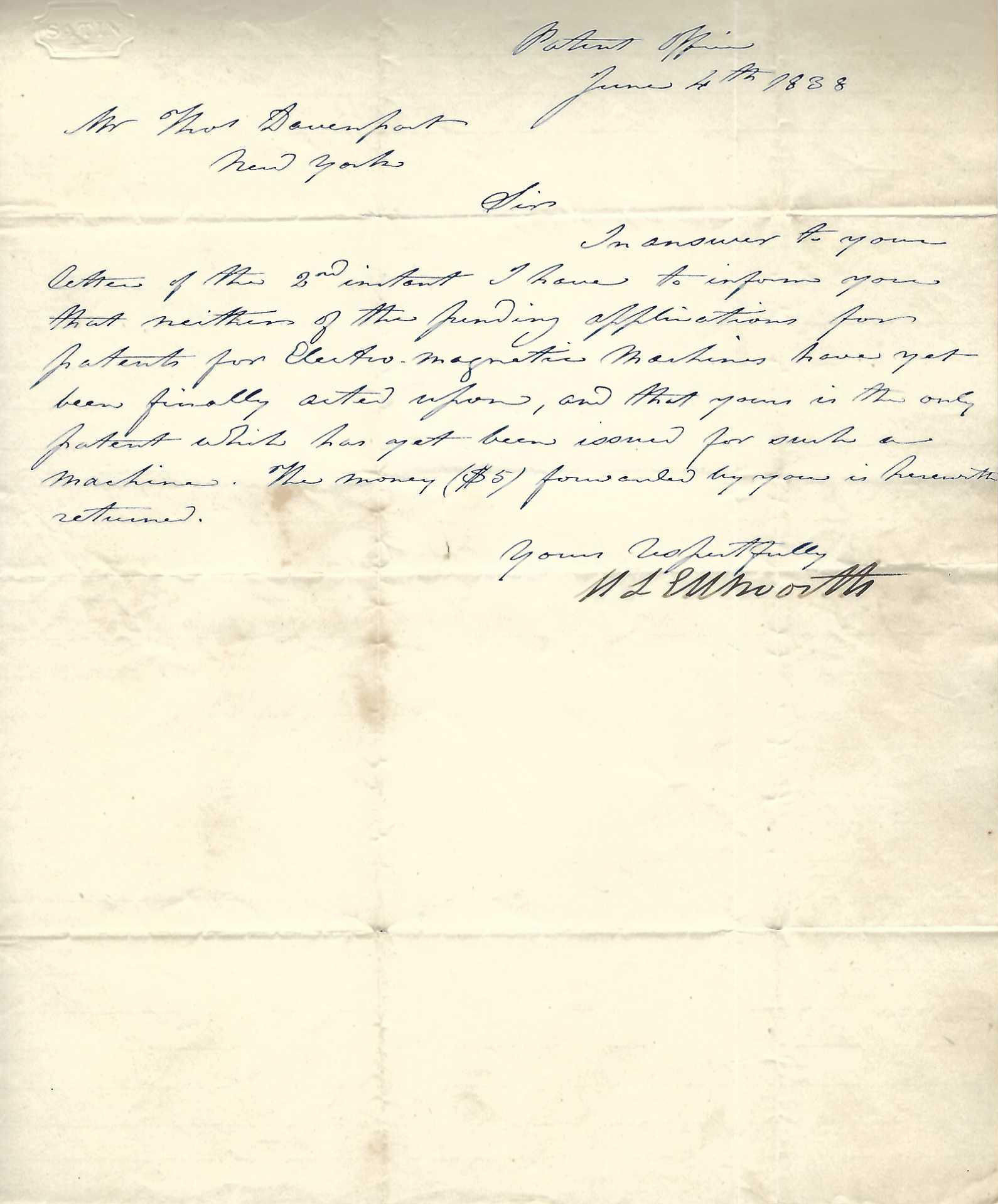Letter Signed as Commissioner of the US Patent Office. Washington, D.C., June 16, 1838, to Thomas Davenport, New York
- SIGNED
Quarto, 1 page, formerly folded, in good, clean and legible condition.
1838 First patented electric motor in America.
"Sir,
...neither of the pending applications for patents for Electro-magnetic Machines have yet been finally acted upon, and... yours is the only patent which has yet been issued for such a machine…"
Davenport was a self-taught Vermont blacksmith who constructed the first American DC electric motor in 1834. Other inventors in Europe had accomplished the same feat, but Davenport was the first to patent his design in the United States.
Davenport used a battery-powered electric motor to operate a small model car on a short section of track, paving the way for the later electrification of streetcars. He later used his electric motor to print "the Electro-Magnetic and Mechanics Intelligencer" – the first newspaper printed using electricity.
Henry Ellsworth, appointed the first Commissioner of the US Patent Office, a position he held for ten years, had the distinction of sponsoring ground-breaking new technology, including Morse's telegraph and Samuel Colt's revolver.
1838 First patented electric motor in America.
"Sir,
...neither of the pending applications for patents for Electro-magnetic Machines have yet been finally acted upon, and... yours is the only patent which has yet been issued for such a machine…"
Davenport was a self-taught Vermont blacksmith who constructed the first American DC electric motor in 1834. Other inventors in Europe had accomplished the same feat, but Davenport was the first to patent his design in the United States.
Davenport used a battery-powered electric motor to operate a small model car on a short section of track, paving the way for the later electrification of streetcars. He later used his electric motor to print "the Electro-Magnetic and Mechanics Intelligencer" – the first newspaper printed using electricity.
Henry Ellsworth, appointed the first Commissioner of the US Patent Office, a position he held for ten years, had the distinction of sponsoring ground-breaking new technology, including Morse's telegraph and Samuel Colt's revolver.


